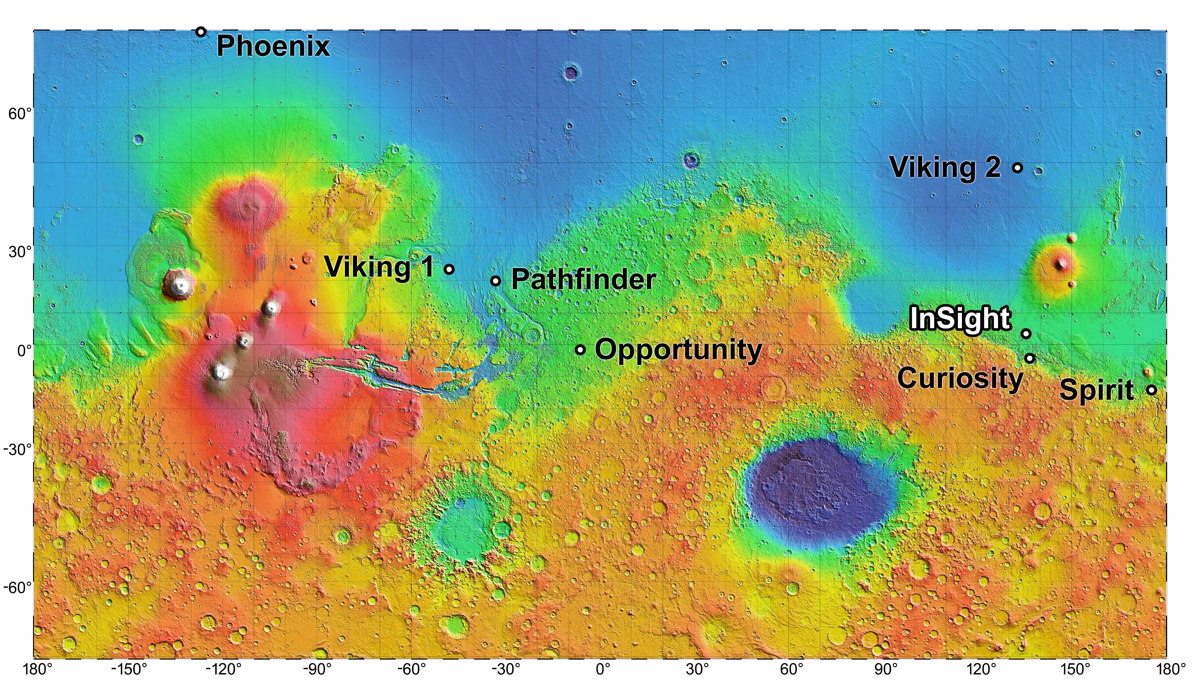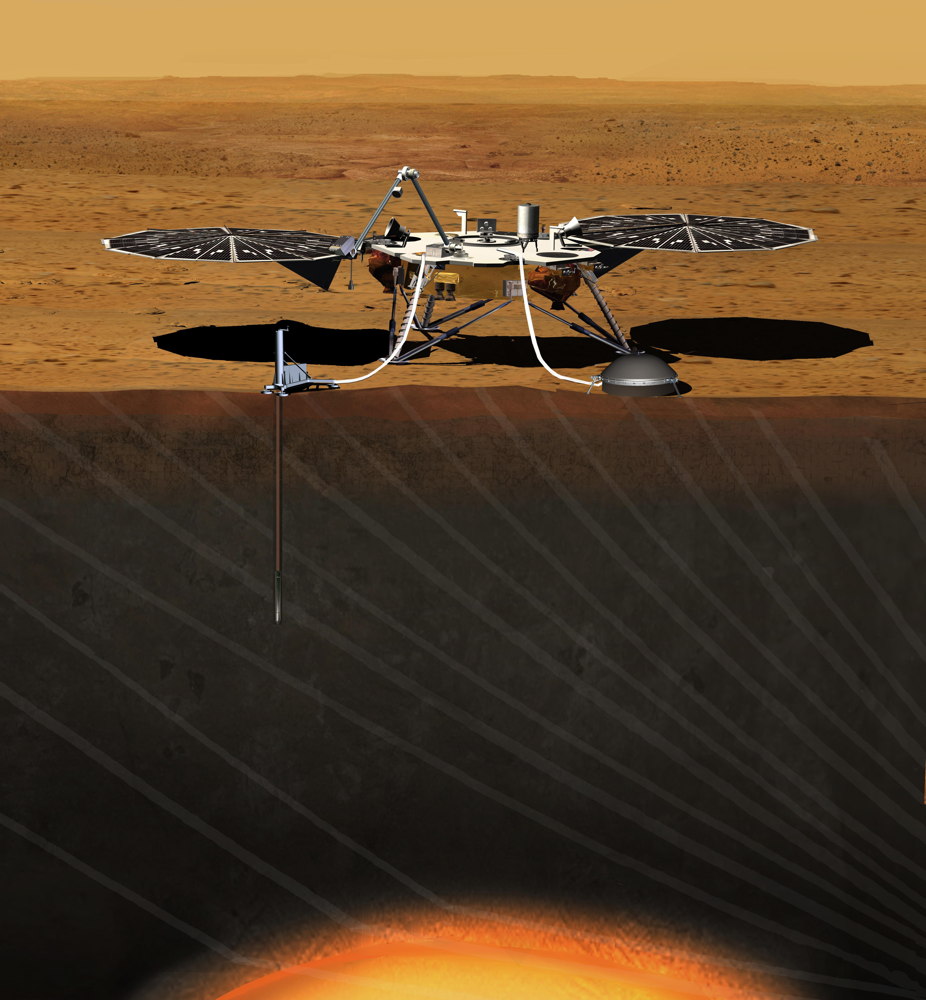NASA Studying 4 Landing Site Options for 2016 Mars Mission

NASA is weighing candidate landing sites for its next mission to the surface of Mars, a three-legged probe that will study the Red Planet's core in 2016.
The space agency has four potential landing sites in mind for the new InSight Mars lander. The spacecraft is slated to launch in March 2016 and land on the Red Planet six months later.
"We picked four sites that look safest," geologist Matt Golombek of NASA's Jet Propulsion Laboratory in Pasadena, Calif., said in a statement. "They have mostly smooth terrain, few rocks and very little slope." [NASA's Mars InSight Lander Mission in Pictures]
NASA's InSight mission is a $425 million expedition to determine if the core of Mars is liquid or solid, and why the planet's crust appears to lack tectonic plates like those found on Earth. The probe's name is short for Interior Exploration Using Seismic Investigations, Geodesy and Heat Transport.
Golombek is leading NASA's site-selection process for the Mars InSight mission. Each of the four potential InSight landing sites is near one another in an area of the equatorial region of Mars called Elysium Planitia.
On a NASA-issued map, the InSight landing site candidates appear to be clustered in a zone north of Gale Crater — where the huge Curiosity rover landed in 2012 — and to the northwest of Gusev Crater, where the smaller Spirit rover landed in 2004. NASA will now use its powerful Mars Reconnaissance Orbiter in orbit around the Red Planet to further study the potential landing sites and eventually make a final decision.
"This mission's science goals are not related to any specific location on Mars because we're studying the planet as a whole, down to its core," the mission's principal investigator, Bruce Banerdt of JPL, said in a statement. "Mission safety and survival are what drive our criteria for a landing site."
Breaking space news, the latest updates on rocket launches, skywatching events and more!
The Elysium Planitia region of Mars was chosen because it promises the best chances of success for InSight's mission to probe the interior of Mars, NASA officials said.
InSight is equipped with a heat-flow probe, which it will hammer into the surface of Mars to a depth of between 9 and 15 feet (2.7 to 4.5 meters). But the probe can only hammer into Martian dirt and broken-up surface material, not hard bedrock. InSight also carries a seismometer and radio to conduct experiments. Scientists hope the mission will help them better understand how rocky planets form.
"For this mission, we needed to look below the surface to evaluate candidate landing sites," Golombek said.
InSight also needs a landing site near the Mars equator to ensure there will be enough sunlight for its solar arrays throughout the Martian year. The landing site must be covered with an atmosphere thick enough to support the spacecraft's deceleration during landing.
The four landing site finalists for InSight were selected in August from a larger field of 22 potential candidates. Each of the four sites is an ellipse that measures about 81 miles (130 kilometers) long from east to west, and about 17 miles (27 km) wide from north to south.
NASA estimates suggest InSight should have a 99 percent chance of landing within its chosen ellipse if the mission targets the ellipse's center. Mission scientists also considered portions of Valles Marineris, the famed "Grand Canyon of Mars," and a region dubbed Isidis Planitia for the InSight landing, but those areas were ultimately considered too rocky, windy or uneven to ensure a successful landing.
The InSight mission is one of several Mars missions planned by NASA. The U.S. space agency will launch a new Mars orbiter, called Maven, later this year to study the planet's atmosphere. NASA is also developing a new Mars rover, which will be based on the Curiosity rover design, to launch in 2020. India's first Mars orbiter is slated to launch in October of this year, while the European Space Agency plans to launch a new Mars orbiter and rover in upcoming years under its ExoMars program.
Email Tariq Malik at tmalik@space.com or follow him @tariqjmalik and Google+. Follow us @Spacedotcom, Facebook and Google+. Original article on SPACE.com.

Tariq is the award-winning Editor-in-Chief of Space.com and joined the team in 2001. He covers human spaceflight, as well as skywatching and entertainment. He became Space.com's Editor-in-Chief in 2019. Before joining Space.com, Tariq was a staff reporter for The Los Angeles Times covering education and city beats in La Habra, Fullerton and Huntington Beach. He's a recipient of the 2022 Harry Kolcum Award for excellence in space reporting and the 2025 Space Pioneer Award from the National Space Society. He is an Eagle Scout and Space Camp alum with journalism degrees from the USC and NYU. You can find Tariq at Space.com and as the co-host to the This Week In Space podcast on the TWiT network. To see his latest project, you can follow Tariq on Twitter @tariqjmalik.

